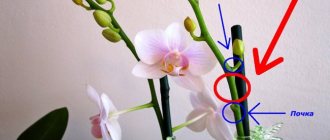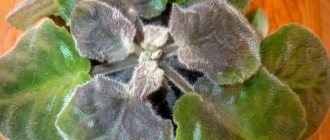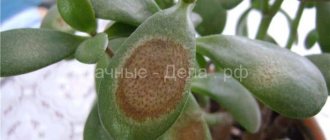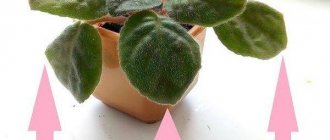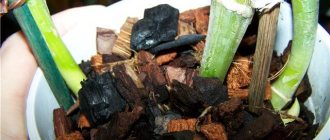Thuja belongs to the ornamental evergreen plant species. The shrub is quite unpretentious in care, but sooner or later every gardener may encounter such a phenomenon as yellowing of the needles. The reasons for the change in plant color can be both natural seasonal changes and pathological processes associated with improper care, diseases or the appearance of pests. The death of the bush can be prevented by promptly identifying and eliminating the negative factors that cause the thuja to turn yellow.
Thuja turns yellow for natural reasons
Let's start with the most pleasant assumptions about the reasons why the thuja turned yellow after winter.
Firstly, you could buy and plant exactly that variety of this conifer for which red, golden, bronze or even lemon-colored needles are the norm.
For example, these could be thuja varieties Golden Globe, Sunkist, Mirjam, Yellow Ribbon, Elwangerlana Aurea. All of them stand out favorably with the bright color of their needles among other conifers in their usual gray-green tones.
- TOP 20 most popular varieties of thuja occidentalis
Our rating includes the best varieties of western thuja, which are most often preferred by landscape designers.
Secondly, the yellowing of the thuja may simply be a seasonal sign of its preparation for the cold season. The darkening and browning of needles (sometimes almost to a brown color) is a protective reaction to a downward change in ambient temperature. Thus, the species plants of western thuja (Thuja occidentalis) and folded thuja (Thuja plicata) acquire a golden-bronze color in the winter months. Other varieties may only turn slightly brown or bronze by winter (thuja varieties Brabant, Columna and Holstrup). With the arrival of spring and the beginning of sap flow, all these plants again gain a rich green color.
Only the thuja variety Smaragd is not characterized by seasonal yellowing - it remains rich green in any cold weather.
Another natural reason for the yellowing of a healthy thuja is its aging. Usually, “tired of life” needles hide inside the crown around the trunk, where they turn yellow, losing chlorophyll, become lethargic, dry out and die (the life cycle of needles is from 3 to 6 years). There is nothing to worry about here either - new needles will grow in their place, this is a normal process. To maintain the decorative appearance of the tree, such a thuja can be carefully cleaned of dying branches.
Diseases
Infectious lesions and fungal diseases are the most dangerous causes of yellowing of thuja needles. In this case, we are talking not only about the loss of the decorative appearance of the specimen, but also about its survival.
Late blight
One of the most dangerous fungal diseases that affects the root and destroys it from above. External manifestation is lethargy of shoots, coloring of needles gray. Gradually, the shoots soften, their internal tissues turn brown, and a rotten smell appears. Most often, late blight affects thujas growing on poorly drained soil.
Schutte
This is a whole group of fungal diseases that exclusively affect coniferous species. The causative agents of the pathology are ascomycete fungi, which have similar symptoms of damage. The first signs of infection are usually observed in the second half of summer, when the needles on last year’s shoots begin to subtly change their color without falling off, and with the onset of autumn, small black dots of nascent mycelium can be seen on it. At first barely noticeable, they soon grow and show themselves in all their glory after the snow melts. In spring, the entire bush is covered with mushroom mycelium, resembling a gray-black cobweb.
There are several varieties of shutte, and the methods of dealing with them are identical. This is sanitary treatment at the first signs of damage using Bordeaux mixture or the preparations “Rkor”, HOM”, “Quadris” and their analogues. It is better to cut off the affected branches, collect all fallen needles by hand or with the top layer of soil (do not dig them up!). If the lesion has already become clearly visible, the plant cannot be saved; in order to stop the spread of infection, it must be dug up and burned.
Alternaria blight
A sign is the browning of the needles and the appearance of a black velvety coating on it. Most often it affects dense plantings. The methods of fighting are the same as with the shutte.
Rust
In addition to browning and falling needles, orange growths can be found on the shoots. The disease cannot be cured, but you can manage to remove the affected parts of the plant.
Fungi, which are the causative agent of rust, have a complex life cycle of development using intermediate hosts. On the site they are apple trees, serviceberry, hawthorn and some other trees and shrubs. For preventive purposes, you should not plant thuja next to these fruit crops.
Important! Most pathogens of infectious diseases remain active in plant residues for a long time! Their careful removal is one of the main preventive measures to prevent the spread of the disease.
Thuja turns yellow due to improper planting
However, the yellowing of thuja is not always caused by such rosy reasons; sometimes the plant simply does not feel well. If in spring or summer you notice extensive browning, yellowing of needles and dying off of greenery in large areas of the crown, then you need to take urgent action. But what doesn’t the tree like?
Improper planting of thuja is the most common factor influencing the change in color of its needles, shedding, drying out of branches and even the death of the plant. What mistakes could you make when planting thuja:
- Choosing the wrong type of soil. Sandy soil is not suitable for this conifer - water and nutrients will go to the lower layers too quickly. Clay soil is also not a very good option; the structure there is too dense and there is little oxygen, so the root system of the thuja will develop poorly. In peat soils, the root system can become damp and rot, which can also be the cause of yellowing of the thuja. The ideal choice for this plant would be light soil (for example, turf, with the addition of peat and sand), well-drained, fertile.
- They did not take into account the depth of groundwater. If the layers with them are located too close, stagnation of water at the roots will cause rotting of the root system, and as a result, yellowing of the needles and drying out of the branches.
- Incorrect planting depth. When planting, you should neither deepen the thuja trunk too deeply nor expose its root collar. Otherwise, there is a high risk of stem rot appearing at the base of the trunk, the plant will begin to slowly dry out and may not only turn yellow, but even die.
- Thickening of plantings. If the thuja's needles turn yellow, it may not like the close proximity to other plants. In places where branches touch, they can bend, and the needles can turn yellow and fall off en masse. The distance between trees when growing thuja should be at least 1 m (if it is not a hedge).
- Strongly drafty place. Open areas are not the best option for planting thuja, because... She really doesn't like drafts.
Unfortunately, if these mistakes have already been made during planting, it is better to replant the thuja, providing the plant with everything necessary for full growth and development, taking into account the above factors.
- Planting a thuja seedling in 4 steps
Plant thuja in the country? Nothing could be easier!
Pests
All varieties of thuja can be parasitized by 7 species of insect pests. Among them are those that specialize in pine needles, stem wood, branches and unripe (green) cone fruits. Most of them are oligophages, i.e. parasitic on a small group of plants, which include thuja, juniper and cypress crops. Pests can be divided into groups.
Sucking
These insects suck the juices from the needles, which leads to its yellowing and death. These are two varieties of coccids (juniper and thuja false scale) and one oligophagous variety of aphids. The thuja aphid is monoecious, non-migratory and is found infrequently, but everywhere. It affects 2-3 year old shoots, parasitizing on their underside.
Insect miners
This is the name of pests whose food is the leaf or coniferous tissue itself, in the process of eating which they build internal passages. The thujas are parasitized by the thuja-mining moth, which lays its tiny caterpillars in the thickness of the needles. However, they can be easily seen in the light. The amount of damage to the viability of the plant can be assessed as insignificant, but the decorative appearance of the specimen may suffer greatly.
Stem pests
The second name of this group is xylophagous insects. Despite the fact that the target of their attack is the trunks and branches of the plant, in advanced cases the needles also begin to turn yellow, not receiving enough nutrients.
The selection of funds depends on the type of lesion and season. In particular:
- For coccids (scale insects and false scale insects), Karbofos is used. Preventive treatment is carried out in June, before the buds open. If a lesion has already occurred, it is recommended to use Actellik or Rogor twice a day with a break of 2 weeks.
- Thuja aphids are sensitive to Actellik, Fufanon and the drug Decis Profi. Preventative spraying is recommended to be carried out in May, in case of damage - at any time.
- A severe invasion of leaf-eating and sucking pests requires radical measures. Branches that cannot be restored are cut and burned, and the cut areas are treated with oil paint or drying oil.
- If holes are found in the bark, injections of undiluted Actellik are made directly into the trunk at the rate of 1 ampoule for every 1 square meter. m. This amount is calculated as 1 drop for each injection.
Thuja turns yellow due to poor care
Improper care is another possible answer to the question “why does the thuja turn yellow.” And there may also be several options here.
For example, an incorrectly selected watering regime. We have already written that stagnation of water at the roots is detrimental to thuja, however, even if there is a lack of moisture, it will most likely begin to turn yellow. Watch the weather, make sure that your coniferous tree always has enough water (on average, thuja is watered once a week with 1-2 buckets of water at the root, in the morning or evening), but do not allow it to overflow. If the thuja turns yellow in the spring, a possible reason is insufficient autumn-spring watering. Left without moisture in the fall, the plant went into winter poorly prepared, and with the arrival of warmer weather it is difficult for it to immediately begin to grow.
A common cause of yellowing and necrosis of needles after winter (when there is still snow and the sun is already hot, reflecting from the snow surface) is spring sunburn of the thuja. To save conifers from this situation, you should not plant their shade-loving species and varieties in bright sun, and it is advisable to cover plants in open space (especially young ones) with non-woven material for the winter until they are completely thawed, leaving access to air. If the thuja has already received a sunburn, abundant watering and shading can save it.
Lightening of needles can be caused by any sudden and prolonged exposure to sunlight - placing pots with seedlings in the open air from indoors, etc.
Prolonged negative temperatures in the absence of snow cover can disrupt the functioning of the root system, causing your thuja to also turn yellow and dry out. To prevent such a situation in the fall, the tree trunks of plants should be mulched.
Yellowing (and even whitening) of individual thuja shoots may also indicate a lack of iron in the soil. In this case, it is worth adding complex mineral fertilizers containing the missing element to the soil.
But with a phosphorus deficiency, thuja needles can turn reddish-purple.
In addition, the cause of discoloration in plants can be atmospheric pollution, the use of nearby chemical reagents (like industrial salt for melting snow), and the systematic defecation of pets. In this case, naturally, the above factors should be excluded.
- Thuja - growing features
How to properly care for thuja?
Preparations for the prevention of rust and schutte
Thuja with red needles provide special care after winter, since in this case the tree may be affected by diseases such as rust or shutte. Most often, these diseases occur in the spring and affect young trees. However, infections spread throughout the year and can affect plants of different ages.
The affected branches need to be removed and the tree treated with fungicides that contain copper. Spraying is carried out in May and throughout the summer. If this treatment does not help, you need to use foundationazole. They do not spray the bushes with it, but rather water the soil. Topsin-M is used against Schutte. This is done in the spring, as soon as the frosts end.
If the thuja begins to dry out, how can you tell which one can be saved?
From left to right - from healthy thuja to completely hopeless
1 Thuja with dark green needles
A vigorous, actively growing thuja, everything is fine with it.
2 There are already dried twigs on the thuja
If the needles on these branches are already completely dry, and the rest of the crown is dark green, this means that the thuja experienced stress or drought, but as a result only the dried branches suffered. Moreover, this did not happen yesterday, but quite a long time ago. But you shouldn’t relax, control the moisture in the soil
3 There are a lot of dried branches on the thuja, including at the top
This means that the plant has experienced a severe lack of water, and now even a small amount of water stress may be unbearable. Cut out dry branches (they will not regenerate), water the plant actively and deeply. A couple of top dressings of ash will help – potassium increases resistance, including to drought
4 Thuja changes the color of its entire needles
If the entire bush begins to lighten, even if completely imperceptibly, it is hopeless. The needles dry out later than the branches - if they change color, then the branches are already brushwood.
Pine needle burn
This usually happens not on hot days, but in early spring, when the soil has not yet thawed completely and the root system has not begun to fully function. To avoid burns, sprinkle the soil around the tree with peat chips or ash. This will reduce the reflection of sunlight. Shading mesh also helps a lot.
In the fall, do not forget to carry out moisture-recharging watering, since in winter the tree actively loses moisture. As soon as the snow melts, immediately water the thuja again. To increase the protective properties of the tree, spray it with Epin solution.
Good protection is provided by treating plants with Prshat-O. For optimal protection, repeat treatment after 20-25 days as needed.
If the needles are already burned, remove the affected parts and shade the tree.
